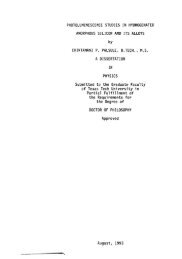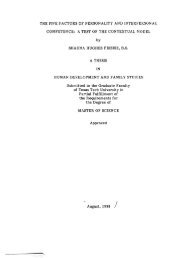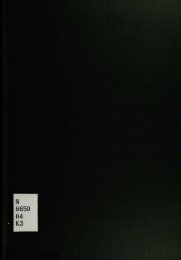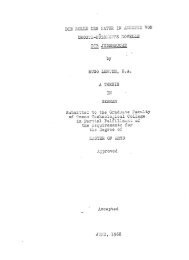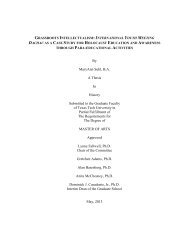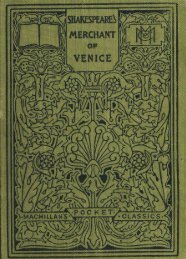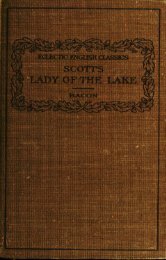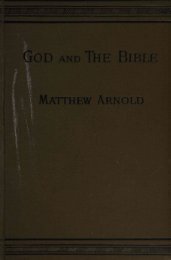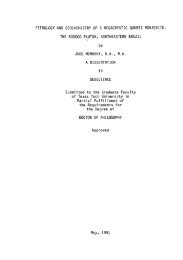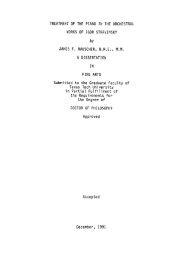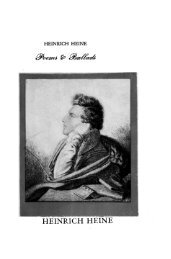THE SOUNDSCORE TO heartBEAT: A NARRATIVE-FORM MUSIC ...
THE SOUNDSCORE TO heartBEAT: A NARRATIVE-FORM MUSIC ...
THE SOUNDSCORE TO heartBEAT: A NARRATIVE-FORM MUSIC ...
You also want an ePaper? Increase the reach of your titles
YUMPU automatically turns print PDFs into web optimized ePapers that Google loves.
CHAPTER m<br />
METHODOLOGY AND MATERL\LS<br />
<strong>heartBEAT</strong> features an electronically produced soundscore, utilizing current<br />
developments in digital sampling, synthesis, and tape synchronization technologies. The<br />
score was composed, performed, engineered and produced by the author at Broadway<br />
Studios, Lubbock, Texas, and is the result of three years of applied study in these related<br />
technologies.<br />
Methodology<br />
The Post-Score Process<br />
The soundscore to <strong>heartBEAT</strong> was post-scored, or prepared after the visual portion<br />
of the artwork was complete. This allowed for considerable flexibility in sound design<br />
and aided in a more complementary musical contribution to the overall dramatic tone of<br />
the piece.<br />
Background. The post-score process is used widely in preparing audio for film<br />
and television. This method saves producers and directors valuable time when in the<br />
field filming or shooting a work, as critical attention can be shifted away from audio<br />
elements during the filming process. Aesthetically, post-scoring allows for visual design<br />
to remain the primary interpretive vehicle of the script. Music and sound can then be used<br />
to provide subjective reinforcement to dramatic form.<br />
Working Method. In preparing the soundscore, individual scenes were viewed<br />
repeatedly until the visual tone and dramatic content suggested a musical or auditor.'<br />
setting. While watching the screen, music was initially improvised until specific musical<br />
dimensions of the section (tempo, key, and themes) were determined. A click track at the<br />
chosen tempo was then gridded against subsequent playings of the scene. Visual edits,<br />
graphic elements and spoken text could thus be converted into musical time, appearing in<br />
relationship to specific measures, beats, and subdivisions of beats. The primary<br />
13



